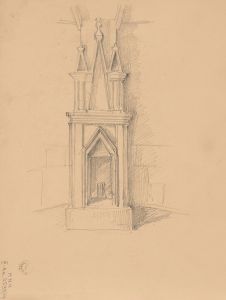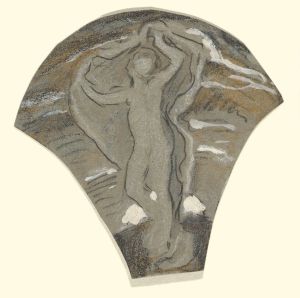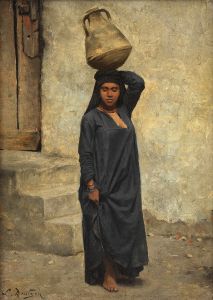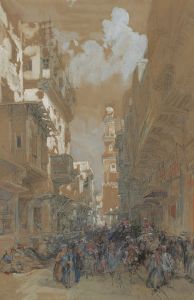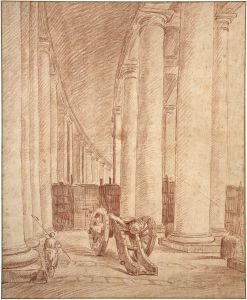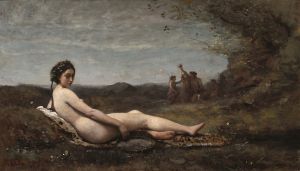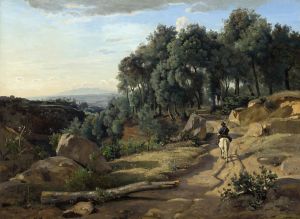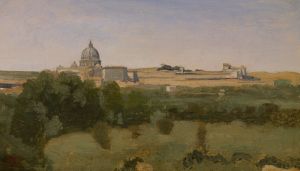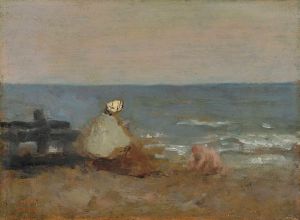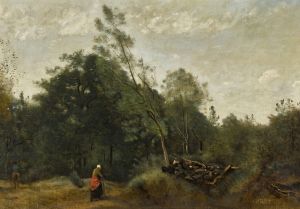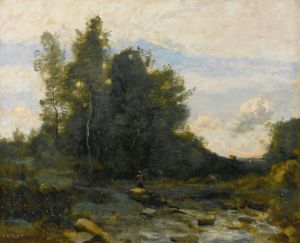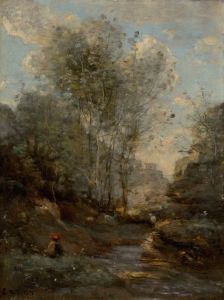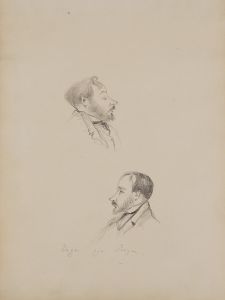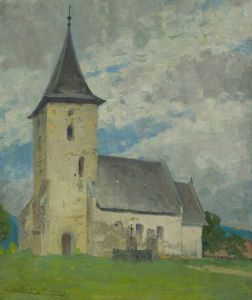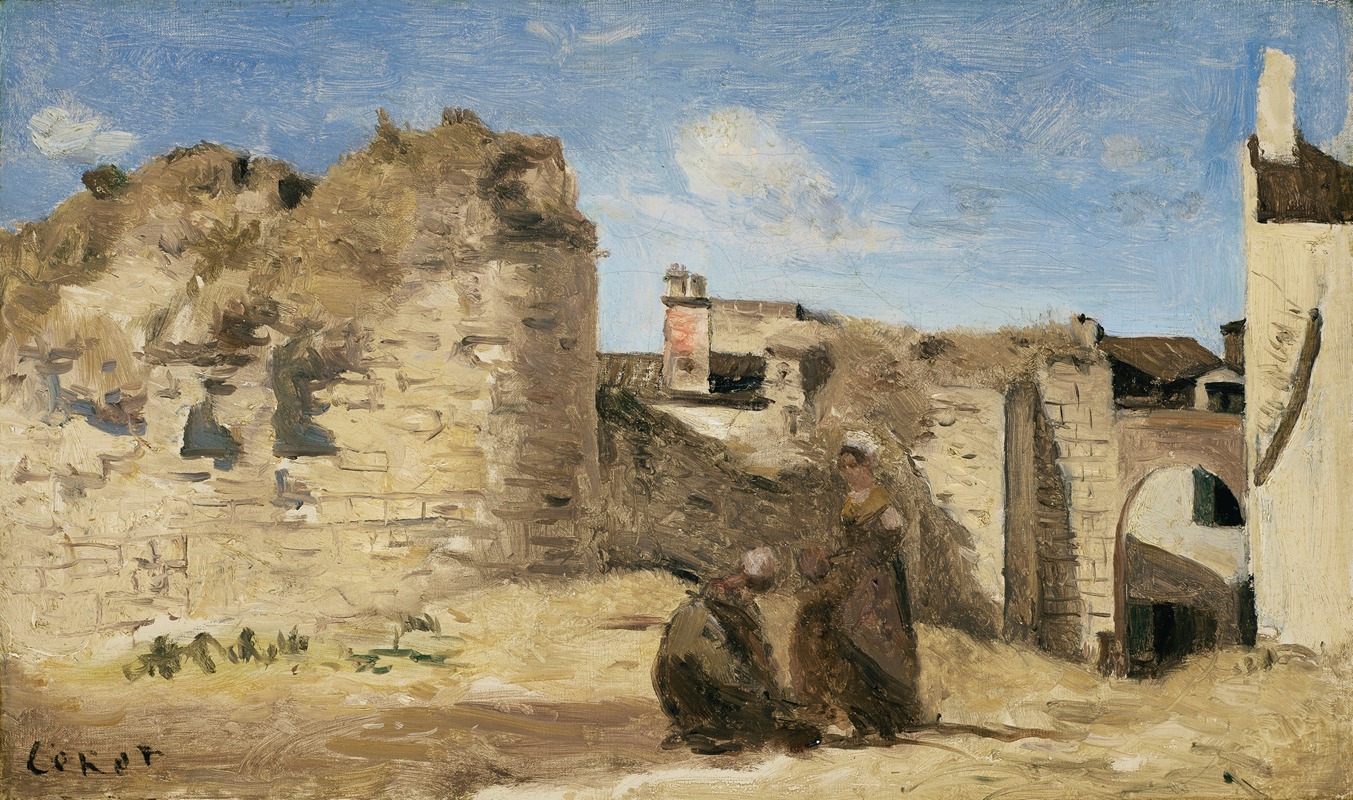
La Rochelle – un coin de la cour de la commanderie
A hand-painted replica of Jean-Baptiste-Camille Corot’s masterpiece La Rochelle – un coin de la cour de la commanderie, meticulously crafted by professional artists to capture the true essence of the original. Each piece is created with museum-quality canvas and rare mineral pigments, carefully painted by experienced artists with delicate brushstrokes and rich, layered colors to perfectly recreate the texture of the original artwork. Unlike machine-printed reproductions, this hand-painted version brings the painting to life, infused with the artist’s emotions and skill in every stroke. Whether for personal collection or home decoration, it instantly elevates the artistic atmosphere of any space.
Jean-Baptiste-Camille Corot, a prominent French landscape painter of the 19th century, is renowned for his contributions to the Barbizon School and his influence on the development of Impressionism. One of his lesser-known works, "La Rochelle – un coin de la cour de la commanderie," exemplifies his ability to capture the serene beauty of natural and architectural elements.
Corot was born in Paris in 1796 and began his artistic career in the early 1820s. He was known for his plein air painting technique, which involved painting outdoors to capture natural light and atmosphere. This approach allowed him to create works that were both realistic and infused with a sense of tranquility and harmony.
"La Rochelle – un coin de la cour de la commanderie" is a painting that reflects Corot's interest in capturing the essence of a place. La Rochelle, a coastal city in southwestern France, is known for its rich history and picturesque scenery. Although specific details about the painting's creation are scarce, it is likely that Corot visited La Rochelle during one of his many travels across France, where he sought inspiration from various landscapes and urban settings.
The painting depicts a corner of a courtyard, possibly part of a commandery, which historically refers to a building or complex associated with a knightly order. Corot's choice of subject matter highlights his fascination with historical architecture and its integration with the surrounding environment. The composition is characterized by a careful balance between architectural elements and natural surroundings, a hallmark of Corot's style.
Corot's use of light and shadow in this painting is particularly noteworthy. He employs a soft, diffused light that bathes the scene in a gentle glow, creating a peaceful and contemplative atmosphere. This technique is indicative of Corot's mastery in rendering the subtleties of light, which would later influence the Impressionists in their exploration of light and color.
The palette used in "La Rochelle – un coin de la cour de la commanderie" is typical of Corot's work, featuring muted earth tones and soft greens that evoke a sense of calm and timelessness. His brushwork is delicate and precise, capturing the textures of stone and foliage with a refined touch. This attention to detail, combined with his ability to convey mood and emotion, is what sets Corot apart as a landscape painter.
While "La Rochelle – un coin de la cour de la commanderie" may not be as widely recognized as some of Corot's other works, it nonetheless exemplifies his artistic philosophy and technical skill. Corot's influence on the art world extends beyond his own paintings; he played a crucial role in bridging the gap between the classical landscape tradition and the emerging Impressionist movement. His emphasis on capturing the transient effects of light and atmosphere paved the way for artists like Claude Monet and Camille Pissarro, who would further explore these themes in their work.
In summary, "La Rochelle – un coin de la cour de la commanderie" is a testament to Jean-Baptiste-Camille Corot's ability to blend natural and architectural elements into harmonious compositions. Through his masterful use of light, color, and composition, Corot captures the serene beauty of a corner in La Rochelle, leaving a lasting impression on the viewer and securing his place as a pivotal figure in the history of landscape painting.





